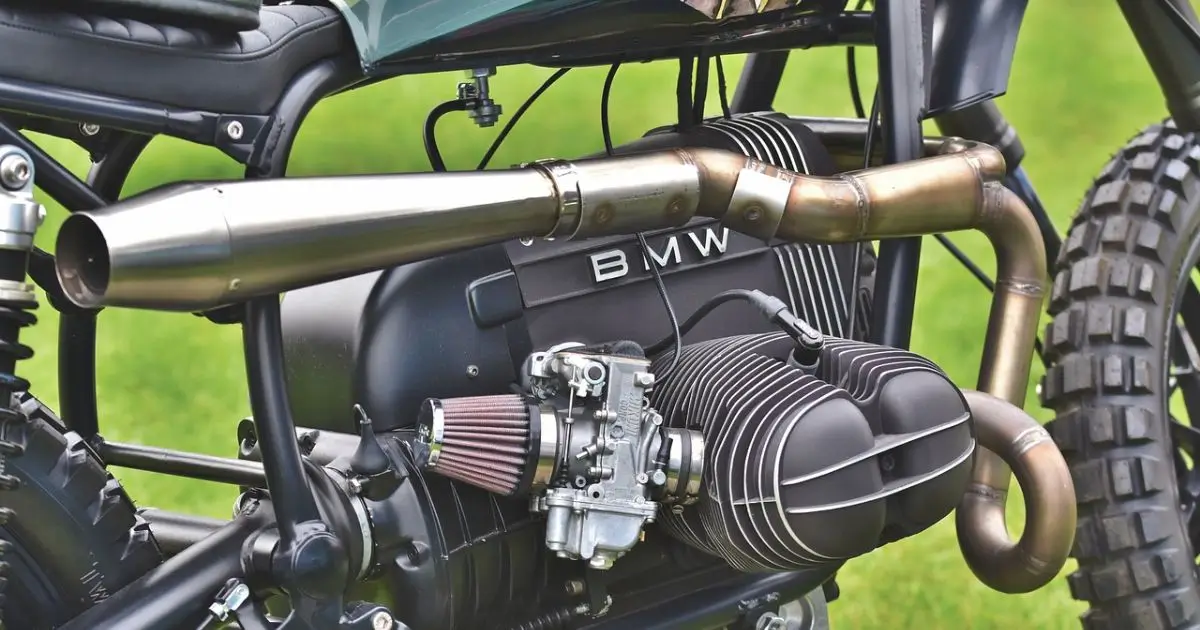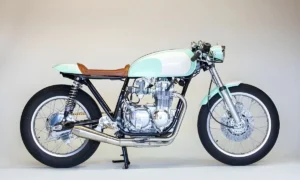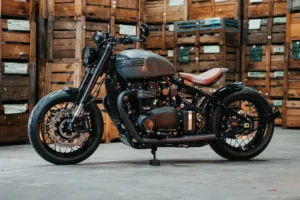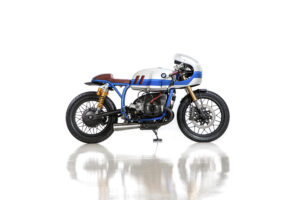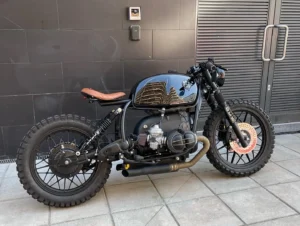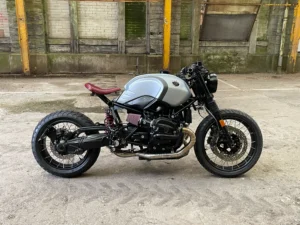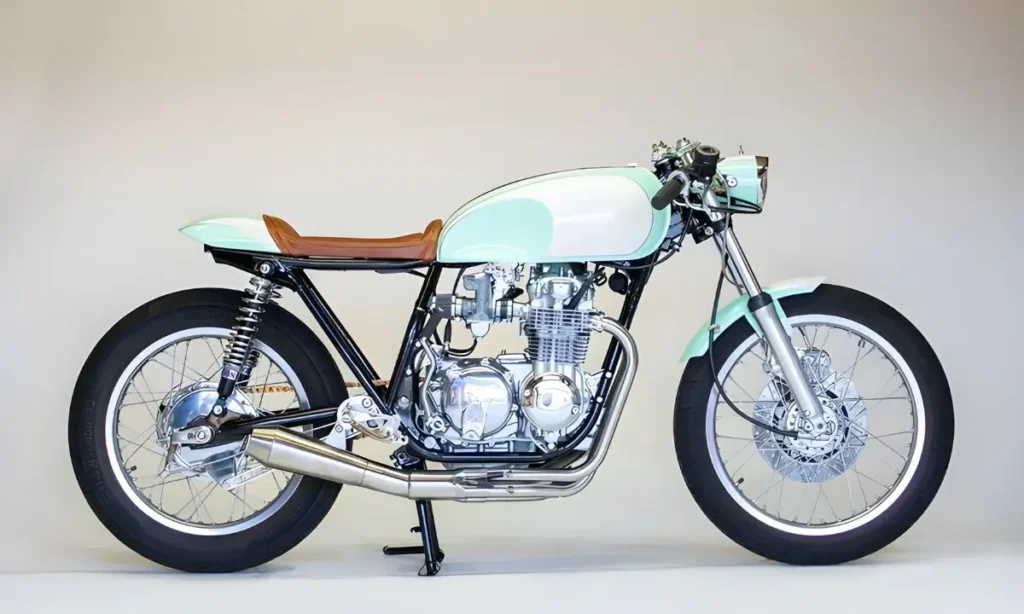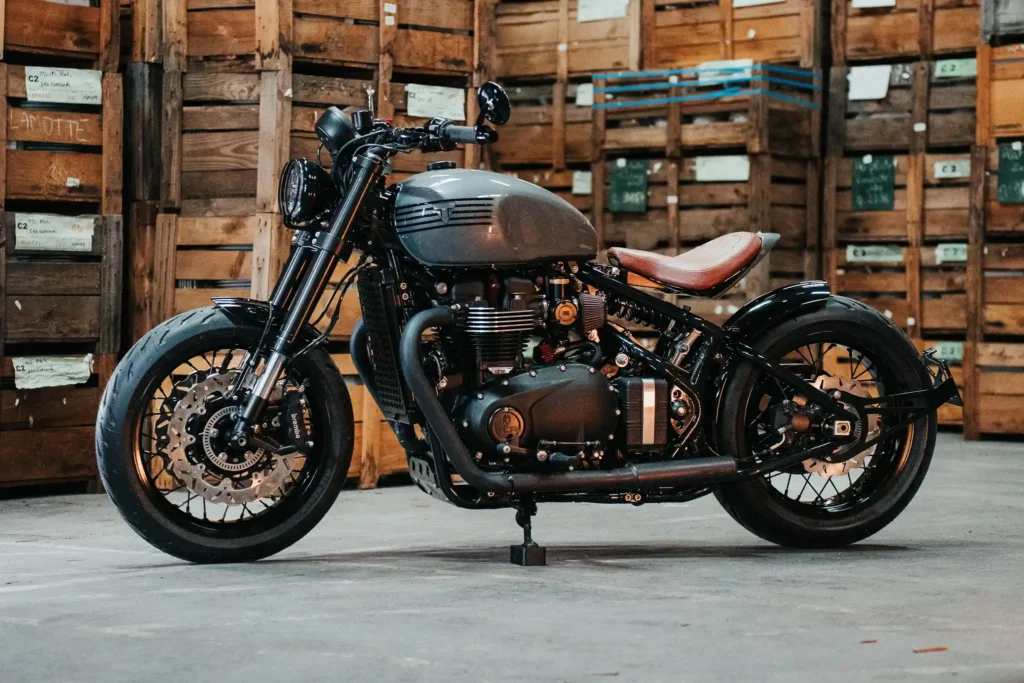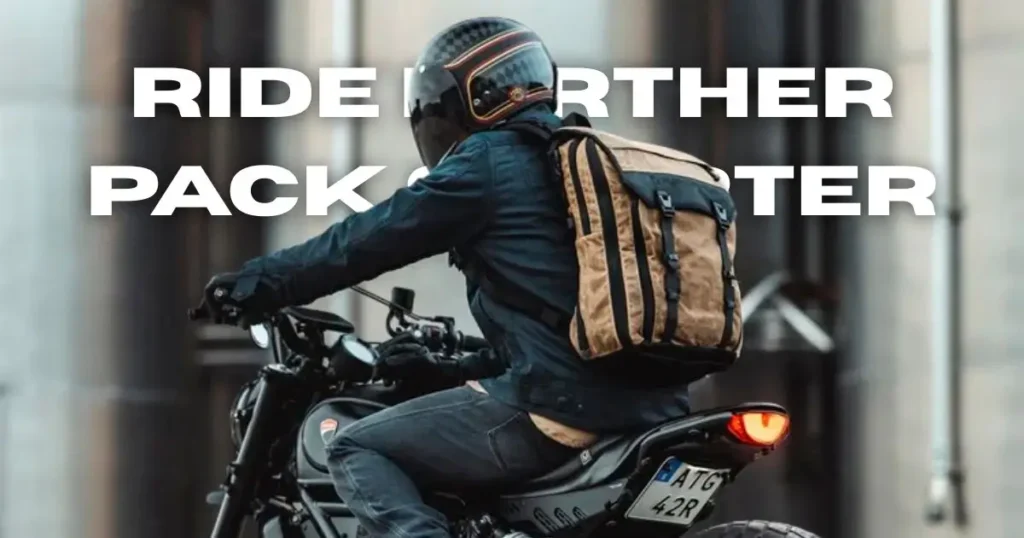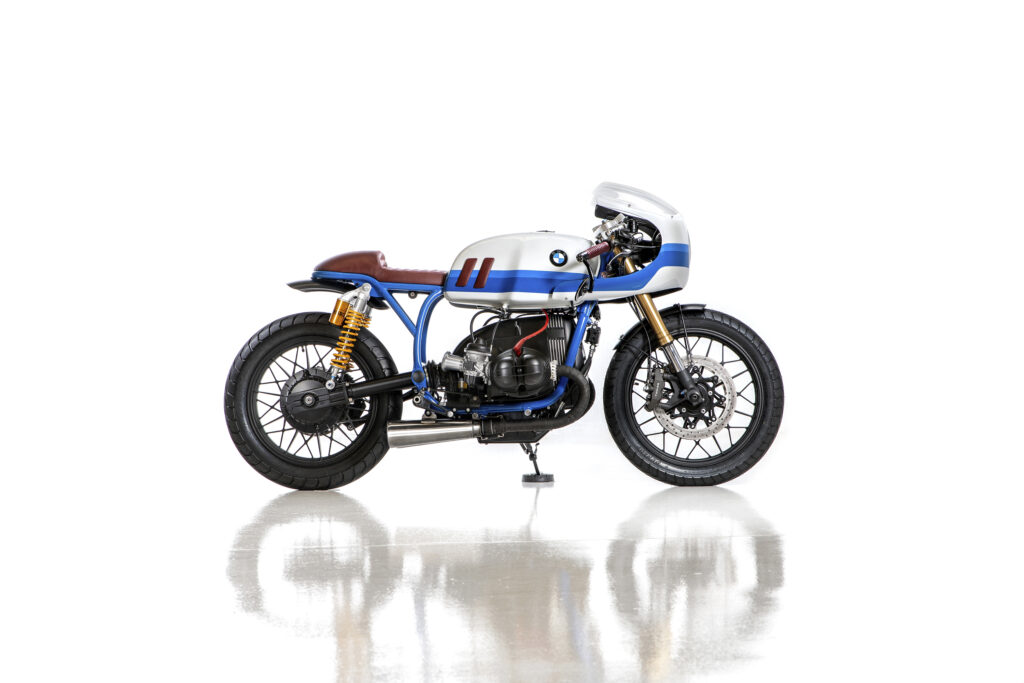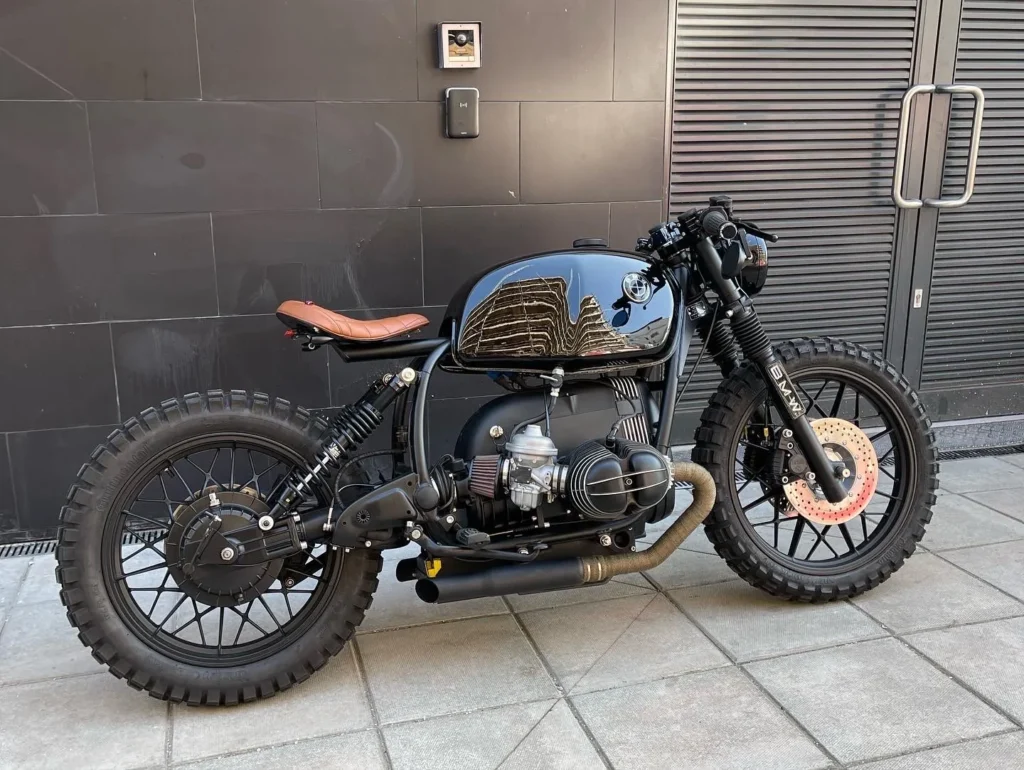Table of Contents
ToggleThe BMW boxer engine is one of the most recognized engines in motorcycle history. Its unique design, proven strength, and mechanical simplicity have made it a favorite among riders and builders for decades.
In the world of café racers, where performance, style, and tradition meet, the boxer engine holds a special place. It combines smooth power delivery with a low center of gravity, making it ideal for custom builds.
This article explores what makes the BMW boxer engine legendary and why it continues to be the heart of many iconic café racers today.
What is a Boxer Engine?
A boxer engine is a type of internal combustion engine where the pistons move horizontally in opposite directions. Each piston moves away from and towards its partner like a punching motion.
This design creates a strong balance because the forces cancel each other out. The result is a smooth and stable operation compared to other engine types.
The boxer layout keeps the engine’s center of gravity low. A lower center of gravity improves the handling of the motorcycle, making it more stable during turns and at higher speeds. This also allows the bike to feel lighter and more responsive.
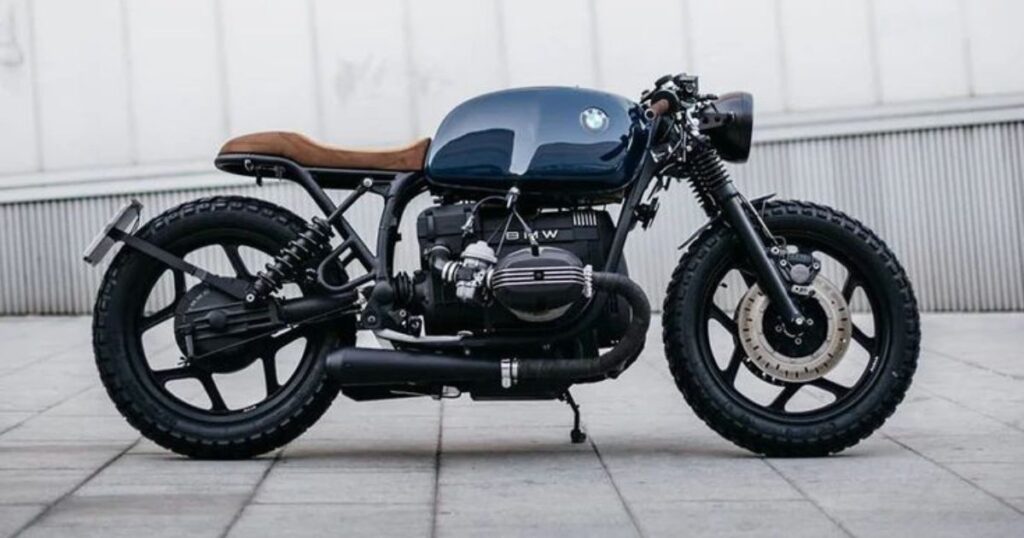
In a boxer engine, the cylinders stick out on each side of the motorcycle. This layout improves airflow over the engine, helping it stay cool during long rides. Better cooling means better performance and a longer engine life, especially important for older models and custom builds.
BMW perfected the boxer engine design by focusing on reliability, simplicity, and performance. Their engines are known for lasting a long time with basic maintenance.
These qualities make the BMW boxer engine an excellent choice for riders who value both tradition and function in their motorcycles.
The History of BMW’s Boxer Engine
BMW introduced its first boxer engine in 1923 with the BMW R32 motorcycle. Designed by Max Friz, this engine placed two horizontally opposed cylinders on either side of the bike.
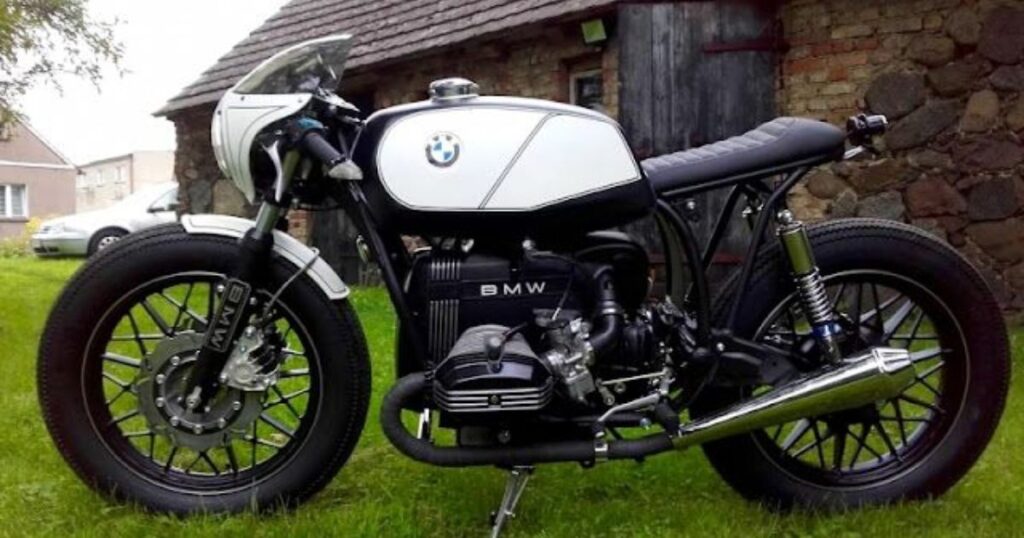
The R32 set the foundation for BMW’s future motorcycle designs. It showed the world a new way to balance power, stability, and durability in a motorcycle engine.
During the 1930s and 1940s, BMW improved the boxer engine by adding better lubrication systems and stronger materials.
These changes allowed the bikes to perform reliably in different weather and road conditions. The boxer engines became known for their toughness, especially in military and police use.
In the 1970s, BMW introduced models like the R75/5 and R90S. These motorcycles featured updated boxer engines with more power, better suspension, and modern electrical systems.
This period marked a rise in popularity among sport riders and touring enthusiasts who wanted both performance and comfort.
Today, BMW continues to build motorcycles with boxer engines, like the modern R nineT series. Even with new technology and materials, BMW keeps the original boxer concept alive. The focus remains on balance, reliability, and a strong connection between rider and machine.
Why the Boxer Engine is Perfect for Café Racers
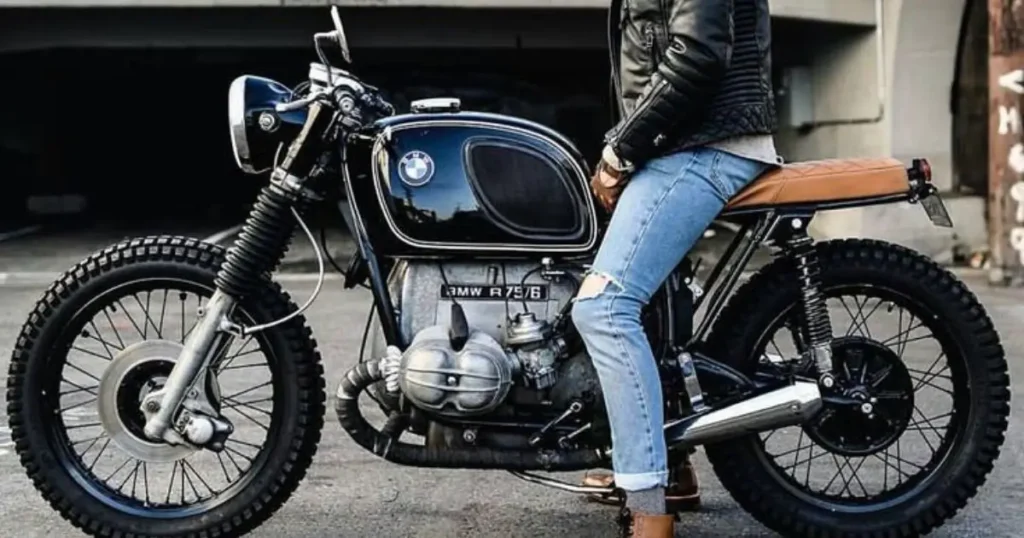
The boxer engine’s flat design offers a low and balanced weight distribution. This feature makes a café racer more stable during quick turns and fast riding. Riders feel more connected to the road because the bike responds naturally to steering inputs.
The engine’s simple structure makes it easy to customize. Builders can access the cylinder heads easily without removing large parts of the bike. This saves time during modifications and maintenance, which is important when building a café racer with limited tools or budget.
A boxer engine also produces smooth power across a wide range of speeds. Café racers, designed for quick acceleration and steady cruising, benefit from this even power delivery. The rider can enjoy consistent performance without sudden engine stress.
The symmetrical look of the boxer engine adds visual appeal to a café racer. The exposed cylinders give a raw, mechanical style that matches the minimalist spirit of café racer culture. The engine becomes not just a source of power but also a part of the bike’s design.
Famous BMW Motorcycles That Used the Legendary Boxer Engine
The BMW R75/5, released in 1969, was one of the first modern motorcycles to use an updated boxer engine. It combined strong performance with comfortable handling, making it popular among everyday riders and long-distance travelers. Its reliability and smooth ride made it a favorite for early café racer builds.
The BMW R90S, launched in 1973, introduced a more powerful version of the boxer engine. With better speed and sharper design, the R90S became a symbol of sport riding in the 1970s. It also offered better braking and handling, important features for those who wanted to turn it into a high-performance café racer.
The BMW R100 series, starting in 1976, pushed boxer engine technology further. These motorcycles featured larger engines, better cooling, and stronger frames. Builders preferred the R100 models because they offered a balance between classic style and modern engineering.
Each of these models provided a strong base for customization. Their durable frames, reliable engines, and classic looks made them ideal choices for anyone aiming to create a true BMW café racer.
Why is the BMW Boxer Engine the Best Choice for Building a Café Racer?
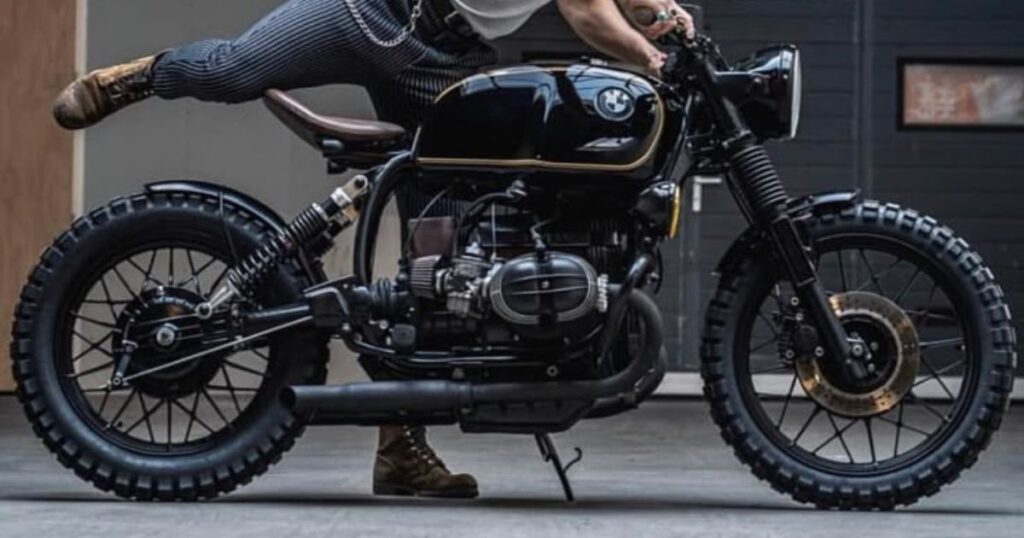
The boxer engine’s durability is one of its strongest advantages. With regular maintenance, these engines can run smoothly for hundreds of thousands of miles. This long lifespan makes them a reliable foundation for custom café racers that owners plan to keep for many years.
Ease of maintenance is another important benefit. The open design of the boxer engine allows quick access to major parts like the valves and cylinders. Builders and riders can perform repairs, adjustments, and upgrades without removing large sections of the motorcycle.
Visual balance is a key feature that attracts builders to the boxer engine. The symmetrical shape of the exposed cylinders gives a café racer a clean and powerful look. It enhances the bike’s style without adding unnecessary weight or complexity.
Another advantage is the engine’s steady power output. The smooth acceleration provided by the boxer engine matches the riding style expected from a café racer. It allows fast starts and consistent performance without placing heavy stress on the bike.
Essential Tips for Restoring or Customizing a BMW Boxer Café Racer
Choosing the right model and parts is important when starting a BMW boxer café racer project. A careful approach ensures a better build, better performance, and long-term reliability. Here are key tips to follow:
- Select the right base model
Older BMW R-series models like the R75, R80, or R100 offer a strong starting point. They have proven engines, strong frames, and wide parts availability. - Inspect the engine and transmission
Check for oil leaks, worn gaskets, and transmission smoothness. Early repairs will save time and money during the customization process. - Upgrade suspension and brakes
Original suspension and braking systems can be outdated. Modern shocks, forks, and disc brakes improve handling, safety, and overall ride quality. - Simplify the electrical system
Replace old wiring with modern harnesses. Upgrade to a smaller battery and install efficient lighting systems to reduce weight and avoid electrical failures. - Focus on weight reduction
Remove unnecessary parts like heavy fenders, large seats, and old exhaust systems. Use lightweight materials for better speed, handling, and overall café racer style. - Choose the right tires
Install tires that match your riding needs. A balance between vintage look and modern grip improves both style and performance. - Preserve engine cooling
Maintain clear airflow to the cylinders. Avoid installing bodywork or covers that block the natural cooling effect essential for boxer engines. - Respect the original character
Keep the engine’s exposed cylinders and mechanical look. A true café racer build celebrates the boxer engine’s iconic design rather than hiding it.
Conclusion
The BMW boxer engine has shaped the history of motorcycles with its unique design and proven performance. Its low center of gravity, smooth power, and easy maintenance make it a perfect choice for café racer builds. Riders and builders continue to trust the boxer engine for its durability and distinctive style.
Café racers demand a balance between speed, control, and appearance. The boxer engine meets these needs while adding a strong visual presence. Its exposed cylinders, symmetrical design, and reliable function create a motorcycle that is both beautiful and practical.
Building or restoring a BMW café racer with a boxer engine allows riders to connect with a rich tradition of craftsmanship and innovation. It offers a timeless riding experience that blends history, mechanics, and personal style into one machine.

